Ertach Kernow - Cornwall’s canal heritage unlocked
Cornwall's canal heritage is perhaps not as well known as it is for its other industrial heritage, The period from about 1790 to 1810 saw what became known as Canal Mania, a period of fervent canal construction and speculation. Canals were a major contributor to the Industrial Revolution and Cornwall with its mining industry was at the forefront, however Cornwall’s terrain does not lend itself well to a canal network. The distance together with other geographical challenges prevents linking to any other canal’s in Devon, which has only seven these dispersed around the county. Only six canals were attempted in Cornwall, some of these were so limited in scope and short lived they have all but been forgotten, their remains largely overgrown.
Although some of these Cornish canals should be covered in greater depth and will be in due course, here is an overview of Cornwall’s canals almost a lost part of our Cornish industrial history.
Cornish farmland was not particularly good and needed to be supplemented and fertilised. To this end the addition of sand and often seaweed as well as pilchards, either too small or excess to requirements, were added to the soil. Sea sand rich in lime, what was known as manure during this period, was much in demand. Three of our Cornish canals were built with the excavation and movement of sand and lime in mind and often lime kilns were constructed as part of the overall plan. Other canals were constructed for transportation as part of that other great Cornish industry, mining.
One of the smallest and near forgotten was the Parnell Canal also known as the Carclaze Canal. This was constructed around 1720 to transport tin ore from the open cast Carclaze mine in an area better known now for china clay. Part of the canal ran underground and actually beneath part of the mine with barges being loaded from above. This tunnel collapsed at the entrance and was rediscovered in 1850 along with 18 barges chained together. A lower canal was also built at a later date as the mine expanded downwards. This was the earliest canal in Cornwall and its development shows how an original leat, used to supply water, was developed further using chains of tub boats to carry ore.
Construction of the Tamar Manure Canal started in 1796 at the height of Canal Mania and was intended to link the upper reaches of the tidal River Tamar with Launceston. However, it was only two miles long ending at Gunnislake, land proposed for the Duke of Bedford’s country estate proved to be an obstacle. The canal did permit the passing of weirs which marked the upper reaches of the highest tides on the Tamar. This enabled Tamar sailing barges to reach a wharf on the Cornish side of the river below the Newbridge road bridge crossing the Tamar. This canal was in use for over 120 years finally ceasing business in the late 1920’s when the river became unnavigable.
The Bude Canal was mentioned within an earlier article about Bude but included here for completeness. Once again this was a canal developed with the transportation of sand to farmland as part of its business plan. The Bude Canal ran for some 30 miles and was considered a marvel at the time with six inclines planes to raise the level of vessels 350 feet above sea level in the first six miles. Although the canal carried other goods the use of sand to fertilise farmland declined and died out with the production of other alternatives. Many businesses were run on the banks of the canal, but after the opening of the railway to Bude in 1898 there was little canal traffic. In 1902 the canal was taken over by the local council after never turning an overall profit, investors receiving £4 for each £50 share.
The Edyvean Canal also known as the St Columb Canal was also reliant on incline planes to raise the cargo to the level of the canal. Incline planes sound very highly engineered, but in reality, it’s a ramp. On some canals, boats can be moved within a caisson containing water to a higher level, or it can be just a ramp using boats with wheels. The Edyvean Canal was designed by Cornishman John Edyvean who spent all his money and that of his sister to build a canal between Lusty Glaze beach in Newquay and St Mawgan. Authorised in 1773 it was never fully completed, although parts were, and those sections with limited use for just a short period.
The Par Canal was part of the great Cornish entrepreneur J T Treffry’s works at Par, where he built a harbour to transport the minerals from the Fowey Consuls mines. Treffry canalised the Par River between Par and Ponts Mill as part of the transportation scheme to connect his tramway to the harbour. The tramway and canal connection was later found to be rather cumbersome, with the tramway being extended to the harbour in 1855. The Cornwall Minerals Railway that took over the tramway in 1873 closed the canal.
Treffry had also considered building a canal from the south coast of Cornwall to the north coast to transport minerals mined in his Fowey Consuls enterprise as early as 1815. The cost and difficulties led him to eventually buy the manor of Towan Blystra in 1836, building a mineral tramway and leading to the expansion of Newquay as a major Cornish town.
The Liskeard and Looe Union Canal was originally conceived for the transportation of manure in 1777 and again considered about 1800. In 1823 money was raised and construction started, eventually being completed in 1828. Business started well an initial 6% dividend paid afterwards falling to 5%. Problems with the carriage of manure was offset by the opening of the South Caradon copper mine in 1837. By 1856 the canal was working to capacity and the company had considerable reserves which was put to use building a railway on land the it already owned. Gradually the railway took over the transportation and the canal fell into disuse, the canal and its locks becoming overgrown. A successful canal, but ultimately one that was put out of business by its own railway. Currently the Caradon Archaeology Society is clearing lock number 21 as part of a wider heritage trail project.
Several other Cornish canals had been proposed but never materialised. In 1796 the well-known American inventor and engineer Robert Fulton studied and planned a canal between Hayle and the Helford river. There was a proposal for a canal between Hayle and Camborne in 1801 to transport ore from mines around the Camborne district. A connection between the Camel and Fowey rivers were considered to provide a north to south connection, in 1825 Marc Brunel father of Isambard Kingdom Brunel was interesting himself in this possibility. A canal from the River Gannel at Newquay to Retyn near St Enodor was considered, to be used for transporting manure and returning lead ore from the mine at East Wheal Rose.
Interesting to consider how Cornwall would be now if all these canals had been built. Would we have looked to repurpose them as we do now, by turning former railway lines and tramways to cycle and walking tracks.
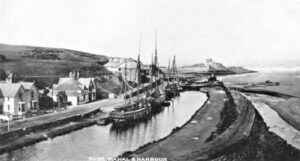
![A view of the tin mine at Carclaise by John Warwick Smith, c.1800] courtesy Science Museum Group Collection A view of the tin mine at Carclaise by John Warwick Smith, c.1800] courtesy Science Museum Group Collection](https://www.cornwallheritage.com/wp-content/uploads/2021/01/A-view-of-the-tin-mine-at-Carclaise-by-John-Warwick-Smith-c.1800-courtesy-Science-Museum-Group-Collection-300x189.jpg)
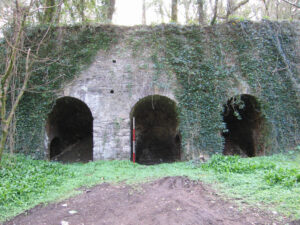
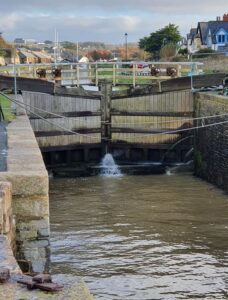
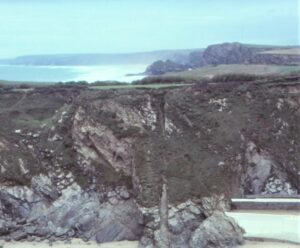
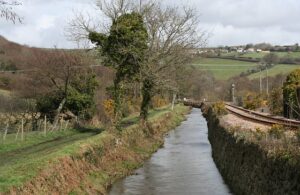
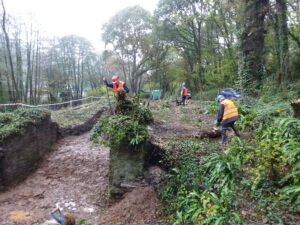
![[31] Voice - Ertach Kernow-270121A - Cornwall's Canals [S] Ertach Kernow - Unlocking the past Cornwall's canals](https://www.cornwallheritage.com/wp-content/uploads/2021/01/31-Voice-Ertach-Kernow-270121A-Cornwalls-Canals-S-231x300.jpg)
![[31] Voice - Ertach Kernow-270121B - Cornwall's Canals [S] Ertach Kernow - Unlocking the past Cornwall's canals](https://www.cornwallheritage.com/wp-content/uploads/2021/01/31-Voice-Ertach-Kernow-270121B-Cornwalls-Canals-S-229x300.jpg)